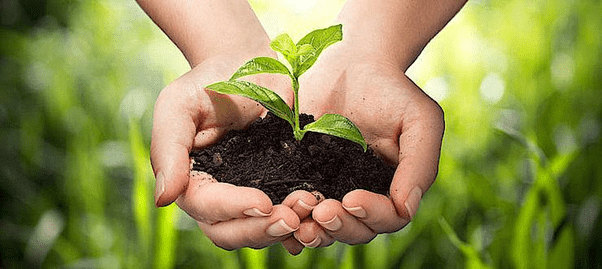Ecology - 1 | Environment for UPSC CSE PDF Download
| Table of contents |

|
| What is Ecology? |

|
| History of Ecology |

|
| What are its Components? |

|
| What Are Different Levels of Organization in Ecology |

|
| Ecosystem’s classification |

|
What is Ecology?

- It is the study of the home of nature.
- Ecology 'Oikos' meaning home or place to live in and 'logos' meaning study.
- Ecology is defined "as a scientific study of the relationship of the living organisms with each other and with their environment." It deals with how their environment moulds organisms and how they use environmental resources, including energy flow and mineral cycling.
History of Ecology
- The roots of ecology lie in Natural History, which is as old as human civilization itself. Since early history, man has indulged in ecology practically, knowingly and unknowingly.
- In primitive societies, every individual was required to have an intimate knowledge of his environment for their survival, i.e., about the forces of nature and of plants and animals around him/her.
- The Vedic period's classical texts such as the Vedas, the Samhitas, the Brahmanas and the Aranyakas Upanishads contain many references to ecological concepts.
- The Indian treatise on medicine, the Charaka-Samhita and the surgical text Sushruta-Samhita show that people understood plant and animal ecology during this period.
- These texts contain species classification based on habit and habitat, land in terms of nature of the soil, climate and vegetation; and description of plants typical to various localities.
- Charaka Samhita contains information that air, land, water and seasons were indispensable for life and that polluted air and water were injurious to health.
What are its Components?
- Everything that surrounds or affects an organism during its lifetime is collectively known as its environment.
- The environment is defined as 'the total of living, non-living components; influences and events, surrounding an organism.
- All organisms (from virus to man) are obligatorily dependent on the other organism and environment for food, energy, water, oxygen, shelter and other needs.
The relationship and interaction between organisms and environment are highly complex. It comprises both living (biotic) and non-living (abiotic) components.

The environment is not static. Both biotic and abiotic factors are in flux and keep changing continuously.
What Are Different Levels of Organization in Ecology
The main levels of organization of ecology are six and are as follows:

1. Individual
- The organism is an individual living being that has the ability to act or function independently. It may be a plant, animal, bacterium, fungi, etc. It is a body made up of organs, organelles, or other parts that work together to carry out various life processes.
2. Population
- A population is a group of organisms usually of the same species, occupying a defined area during a specific time.
- The population growth rate is the percentage variation between the number of individuals in a population at two different times. Therefore, the population growth rate can be positive or negative.
(i) The main factors that make population increase are birth and immigration.
(ii) The main factors that make the population decrease are death and emigration.
(iii) The main limiting factors for the growth of a population are abiotic and biotic components. - Population density is the relation between the number of individuals of a population and the area they occupy.
3. Community
- If we look around ourselves, we will notice that plants and animals seldom occur by themselves. The reason for this is quite obvious. To survive, individuals of any one species depend on individuals of different species with which they actively interact in several ways.
- Examples
(i) Animals require plants for food and trees for shelter. Plants require animals for pollination, seed dispersal, and soil microorganism to facilitate nutrient supply. Communities in most instances are named after the dominant plant form (species).
(ii) A grassland community is dominated by grasses, though it may contain herbs, shrubs, trees, and associated animals of different species. A community is not fixed or rigid; communities may be large or small.
Types of Community
Based on the size and degree of relative independence, communities may be divided into two types:
 (i) Major Community: These are large-sized, well organized and relatively independent. They depend only on the sun's energy from outside and are independent of the inputs and outputs from adjacent communities.
(i) Major Community: These are large-sized, well organized and relatively independent. They depend only on the sun's energy from outside and are independent of the inputs and outputs from adjacent communities.
Example: Tropical evergreen forest in the North-East
(ii) Minor Communities: These are dependent on neighbouring communities and are often called societies. They are secondary aggregations within a major community and are not therefore completely independent units as far as energy and nutrient dynamics are concerned.
Example: A mat of lichen on a cow dung pad.
Structure of a community
In a community, the number of species and size of their population vary greatly. A community may have one or several species. The environmental factors determine the characteristics of the community as well as the pattern of organization of the members in the community. The community's characteristic pattern is termed as a structure reflected in the roles played by various populations, their range, the type of area they inhabit, the diversity of species in the community, and the spectrum of interactions between them.
 |
Download the notes
Ecology - 1
|
Download as PDF |
4. Ecosystem
An ecosystem is defined as a structural and functional unit of biosphere consisting of a community of living beings and the physical environment, interacting and exchanging materials between them. It includes plants, trees, animals, fish, birds, microorganisms, water, soil, and people.
- Ecosystems vary greatly in size and elements, but each is a functioning unit of nature. Everything that lives in an ecosystem is dependent on the other species and elements that are also part of that ecological community.
- If one part of an ecosystem is damaged or disappears, it has an impact on everything else. When an ecosystem is healthy (i.e. sustainable), all the elements live in balance and are capable of reproducing themselves. An ecosystem can be as small as a single tree or as large as an entire forest.
What is the difference between Ecology, Environment and Ecosystem?
- Ecology is the study of interactions between organisms, organisms and the surroundings occurring within an ecosystem or environment.
- An ecosystem is a functional unit of the environment (mostly biosphere).
- An environment is a group of ecosystems.
Components of Ecosystem
The components of the ecosystem and environment are the same.
Abiotic Components
Abiotic components are the inorganic and nonliving parts of the world. The abiotic part consists of soil, water, air, and light energy etc. It also involves chemicals like oxygen, nitrogen etc. and physical processes including volcanoes, earthquakes, floods, forest fires, climates, and weather conditions.
Abiotic factors are the most important determinants of where and how well an organism exists in its environment. Although these factors interact with each other, one single factor can limit the range of an organism.
- Energy: Energy from the sun is essential for the maintenance of life. In the case of plants, the sun directly supplies the necessary energy. Since animals cannot use solar energy directly, they indirectly obtain it by eating plants or animals. Energy determines the distribution of organisms in the environment.
- Rainfall: Water is essential for all living beings. Majority of biochemical reactions take place in an aqueous medium. Water helps to regulate body temperature. Further, water bodies form the habitat for many aquatic plants and animals.
- Temperature: Temperature is a critical factor of the environment, which greatly influences organisms' survival. Organisms can tolerate only a certain range of temperature and humidity.
- Atmosphere: The earth's atmosphere is responsible for creating conditions suitable for the existence of a healthy biosphere on this planet.
- Substratum: Land is covered by soil, and a wide variety of microbes, protozoa, fungi and small animals (invertebrates) thrive in it. Roots of plants pierce through the soil to absorb water and nutrients. Organisms can be terrestrial or aquatic. Terrestrial animals live on land. Aquatic plants, animals and microbes live in freshwater as well as in the sea. Some microbes live even in hot water vents under the sea.
- Materials
(i) An organic compound such as proteins, carbohydrates, lipids, humic substances is formed from the inorganic compound on decomposition.
(ii) An inorganic compound such as carbon dioxide, water, sulphur, nitrates, phosphates, and ions of various metals are essential for organisms to survive. - Latitude and altitude: Latitude has a strong influence on an area's temperature, resulting in a change of climates such as polar, tropical, and temperate. These climates determine different natural biomes. From sea level to the highest peaks, wildlife is influenced by altitude. As the altitude increases, the air becomes colder and drier, affecting wildlife accordingly.
Biotic Components
Biotic components include living organisms comprising plants, animals and microbes and are classified according to their functional attributes into producers and consumers.
- Primary producers - Autotrophs (self-nourishing)
(i) Primary producers are basically green plants (and certain bacteria and algae).
(ii) They synthesize carbohydrates from simple inorganic raw materials like carbon dioxide and water in the presence of sunlight by photosynthesis for themselves and supply indirectly to other non-producers.
(iii) In the terrestrial ecosystem, producers are basically herbaceous and woody plants, while in aquatic ecosystem producers are various microscopic algae species. - Consumers – Heterotrophs or phagotrophic (other nourishing)
(i) Consumers are incapable of producing their own food (photosynthesis).
(ii) They depend on organic food derived from plants, animals or both.
(iii) Consumers can be divided into two broad groups, namely micro and macro consumers.

Macro consumers
- They feed on plants or animals or both and are categorized based on their food sources.
- Herbivores are primary consumers who feed mainly on plants.
- Example: Cow, Rabbit.
- Secondary consumers feed on primary consumers.
- Example: Wolves.
- Carnivores which feed on secondary consumers are recalled tertiary consumers.
- Example: Lions which can eat wolves.
- Omnivores are organisms which consume both plants and animals
- Example: Man, Monkey.
Micro consumers - Saprotrophs (decomposers or osmotrophs)
- They are bacteria and fungi which obtain energy and nutrients by decomposing dead organic substances (detritus) of plant and animal origin.
- The products of decomposition such as inorganic nutrients released in the ecosystem are reused by producers and thus recycled.
- Earthworm and certain soil organisms (such as nematodes, and arthropods) are detritus feeders and help in decomposing organic matter and are called detritivores.
Ecosystem’s classification

Ecosystems are capable of maintaining their state of equilibrium. They can regulate their own species structure and functional processes. This capacity of the ecosystem of self-regulation is known as homeostasis.
Ecosystems are providing
- Provision of food, fuel and fibre.
- Provision of shelter and building materials.
- Purification of air and water.
- Detoxification and decomposition of wastes.
- StabilizationStabilization and moderation of the Earth's climate.
- Moderation of floods, droughts, temperature extremes and the forces of wind.
- Generation and renewal of soil fertility, including nutrient cycling.
- Pollination of plants, including many crops Control of pests and diseases.
- Maintenance of genetic resources as key inputs to crop varieties and livestock breeds, medicines, and other products.
- Cultural and aesthetic benefits.
|
96 videos|191 docs|52 tests
|
























